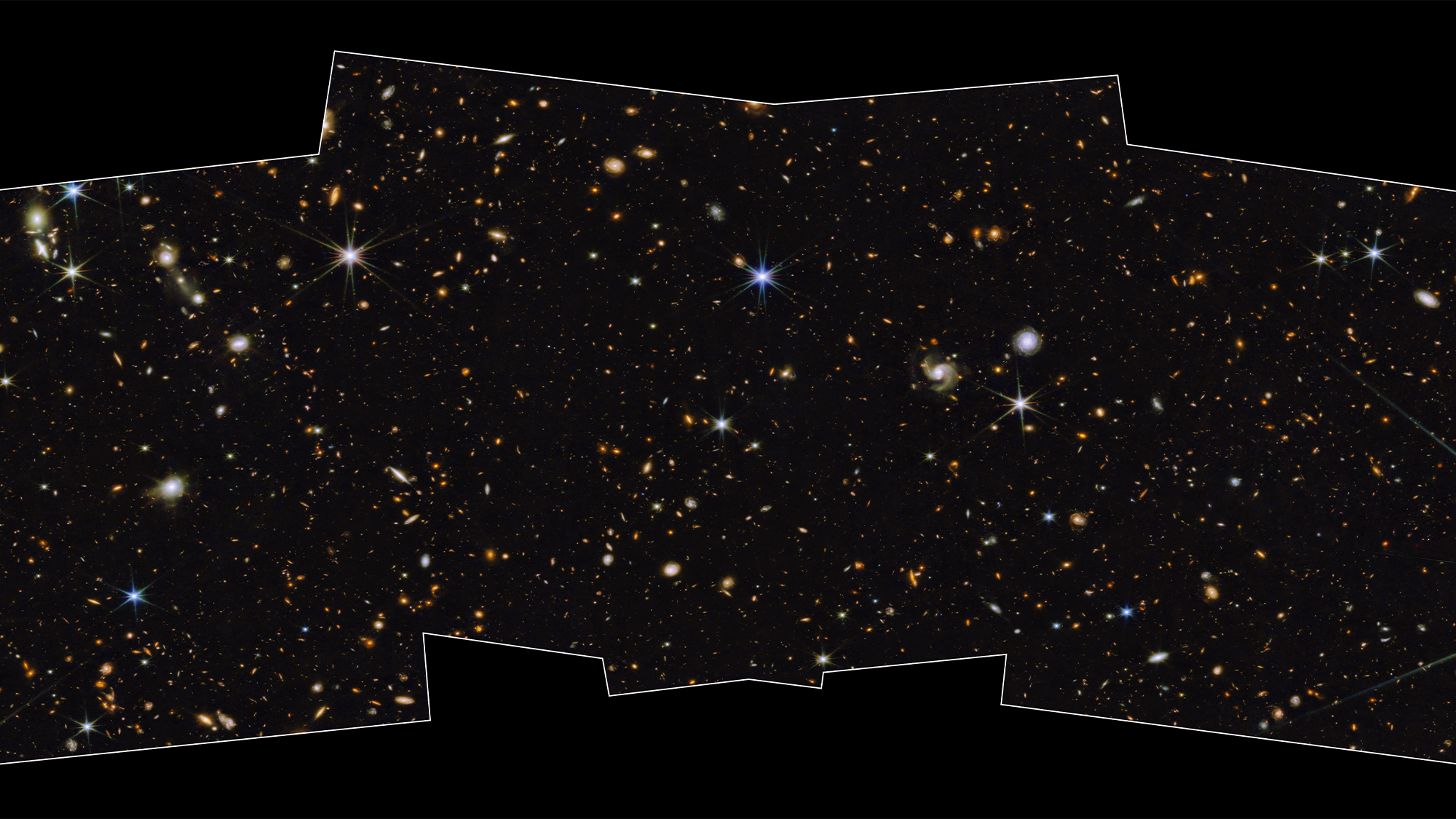

The James Webb Space Telescope (JWST) proves yet again that its gorgeous images are the gift that keeps on giving in 2022.
A dazzling new image is one of the first medium-deep wide-field images of the cosmos and accompanies a paper published Wednesday in the Astronomical Journal. It features a region of the sky called the North Ecliptic Pole and comes from the Prime Extragalactic Areas for Reionization and Lensing Science (PEARLS) program. PEARLS’ main goal is to study, “galaxy assembly, AGN growth, and First Light,” using the data from JWST.
[Related: The James Webb Space Telescope is about to beam us monster amounts of cosmic data.]
The term medium-deep refers to the faintest objects that can be seen within this image, and they are roughly 29th magnitude (1 billion times more faint than the unaided eye can see). Wide-field refers to the total area that will be covered by the PEARLS program, about one-twelfth the area of the full moon.
The new image uses data collected from the JWST and the dependable Hubble Space Telescope. It’s made up of eight different colors of near-infrared light captured by Webb’s Near-Infrared Camera (NIRCam), and is also boosted with three colors of ultraviolet and visible light from the Hubble.
The colors show off in stellar detail the depth of a universe that’s chock full of galaxies, many of which were previously unseen by Hubble or even the largest and most sophisticated land-based telescopes. The image includes thousands of galaxies and some of the light in the image traveled roughly 13.5 billion years. These far ranging stars are shown alongside an assortment of stars within our own Milky Way galaxy, giving it an all-inclusive vibe.

“The stunning image quality of Webb is truly out of this world,” said co-author Anton Koekemoer, research astronomer at STScI, who assembled the PEARLS images into very large mosaics, in a statement. “To catch a glimpse of very rare galaxies at the dawn of cosmic time, we need deep imaging over a large area, which this PEARLS field provides.”
[Related: The most awesome aerospace innovations of 2022.]
Some of the pinpricks of light within the image show the range of stars that are present in our home Milky Way galaxy and is a useful tool in understanding the universe’s past.
“The diffuse light that I measured in front of and behind stars and galaxies has cosmological significance, encoding the history of the universe,” said co-author Rosalia O’Brien, a graduate research assistant at Arizona State University (ASU), in a statement. “I feel very lucky to start my career right now. Webb’s data is like nothing we have ever seen, and I’m really excited about the opportunities and challenges it offers.”
The NIRCam observations will also be combined with data from another instrument on JWST, the Near-Infrared Imager and Slitless Spectrograph (NIRISS), allowing the team to search for faint objects with spectral emission lines, which can then be used to estimate their distances more accurately.
The new image shows just a portion of the full PEARLS field, which will eventually be about four times larger. However, this huge panel of stars exceeded scientists’ expectations from the simulations they ran they ran before JWST began making scientific observations (and sending us gorgeous images) in July.
“There are many objects that I never thought we would actually be able to see, including individual globular clusters around distant elliptical galaxies, knots of star formation within spiral galaxies, and thousands of faint galaxies in the background,” said co-author Jake Summers, a research assistant at ASU, in a statement.
In the future, the PEARLS team hopes to catch a glimpse of more space objects in this region, such as the varying flares of light around black holes or distant exploding stars.
“This unique field is designed to be observable with Webb 365 days per year, so its time-domain legacy, area covered, and depth reached can only get better with time,” said lead study author Rogier Windhorst, from ASU and PEARLS principal investigator, in a statement.
